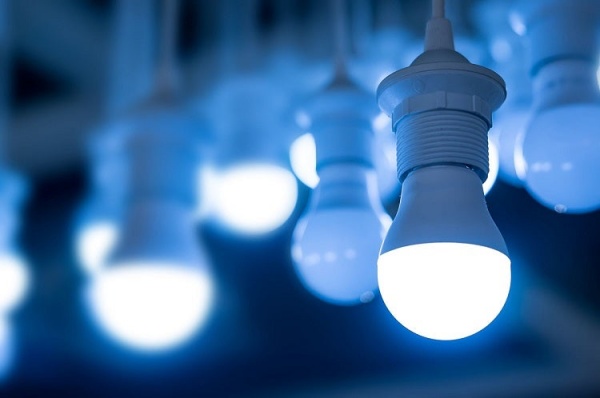In today’s world, LED lamps will continue to conquer the lighting market, confidently advancing on the positions of halogen, fluorescent models, and, of course, incandescent lamps. This conclusion is based on the following points:
- LED lamps are the most economical in terms of energy consumption, and therefore also in terms of costs during operation
- Give the buyer the opportunity to choose a light bulb with any color rendering index, which is optimal for premises for various purposes (office, bedroom, nursery, dining room)
- Ices are record-breaking long-lasting
- Their cost is constantly decreasing, due to which, the savings in purchasing LED lamps are becoming more and more obvious
Of course, the factors listed above are far from the only ones, but we will talk in more detail about the advantages of LED lighting below. Now let us emphasize once again: neither in terms of the quality of lighting, nor in terms of efficiency, nor in terms of service life, LED lamps to have no competitors on the market.

Now let’s take a closer look at each individual factor.
Light flow
In scientific terms, the luminous flux is a physical quantity that determines the amount of light energy passing in the radiation flux through a certain area per unit of time. In colloquial language, the luminous flux is called ordinary brightness.
The unit of measure for this value is lumen (abbreviated as “lm” or “lm”).
Determination of the luminous flux brightness is carried out using special devices – photometers or photometric goniometers. We will not go into the details of the measurement procedure; we will only say that only qualified specialists can cope with it. In everyday life, the brightness of the luminous flux, as a rule, is conventionally divided into three categories: “bright” (for living rooms, study rooms, bathrooms), “medium brightness” (for dining rooms, kitchens, living rooms), “moderate” (for bedrooms, storerooms).
Power consumption of electricity
This is another economic benefit factor. Indeed, “LEDs” need very little electricity for a normal glow. For example, instead of the usual 100-watt incandescent lamp, you can use an ICE lamp with a power of only 14 watts! And the 150-watt sample is replaced by a 22-watt LED.
Then everything is simple: less consumption with the same luminosity – less lighting costs and more benefits.
Colorful temperature
Color temperature refers to the hue that pure white light has. It depends on the wavelength of the light emanating from the source.
The color temperature is measured in Kelvin (less often – in Mired). The quality of lighting depends on it, as well as the feeling of comfort being in any room.
Here is the following scale of the most popular light sources:
- The candle flame has a color temperature of about 1800 K. It is a warm soft color
- A 40-watt incandescent light bulb produces light with a temperature of 2200 K, which is also characterized by “warmth”
- A 100-watt light bulb is 2800 K
- “Halogen” – 3000 K
- Fluorescent lamp – 3500 K. Perhaps this figure can be called close to a neutral temperature
- 4000 K is a more pronounced cold shade of white light
We hope that the relationship has already become clear: the lower the “K” value, the warmer the shade will be. And vice versa.
Color rendering index
Color rendering indexes indicate how much the light from a lamp distorts the natural colors of objects. You can also find the name “color rendering index”. This parameter is designated as “Ra” or “CRI”.
The color rendering index is of particular fundamental importance only for those rooms in which it is important to reliably convey every shade of the object. For example, for clothing and footwear stores, for medical offices, canteens, kitchens, cosmetic areas. But the value of the color rendering index of the LED for lighting a staircase, balcony or corridor, in most cases, does not matter.
So, if you want the lighting of a room to allow you to see the interior, decor, materials with their natural shade, you must choose LED lamps with a color rendering index of at least 75.
Number and size of LEDs
Individual buyers, when choosing an LED luminaire, tend to find the model with the largest number of LEDs. They mistakenly believe that the size of the ICEs also matters. In fact, no. Neither the size nor the number of LEDs are considered indicators that “ironically” indicate the quality, energy efficiency, or brightness of lighting. But they do change in size or number depending on the requirement. Just like led parking lot lights with photocell are bigger in size as compared to regular room lights or lamps. The main indicator here will be the ratio of Lm / W (lumens to watts). That is, everything is simple: the more lumens the lamp “produces” at the same power as others, the better.
Directional diagram of the luminaire
The luminous intensity curve or directional pattern of a luminaire is called a value that shows how the distribution of the luminous flux is carried out. You can often find such a definition: “the luminous intensity curve characterizes the spatial distribution of illumination.” Simply put, such a diagram demonstrates how and with what intensity the room will be illuminated, whether the lighting will focus on individual zones or will it be uniform.
There are many types of LED luminaire diffusers:
- Linear
- Point
- Prismatic
- Raster
- Crushed ice
- Transparent polystyrene
- Opal
Choosing a brand
LED luminaires are rapidly gaining popularity among buyers. Today they are still far from the prevalence of “energy-saving” or traditional incandescent lamps. However, every day more and more people are weighing the pros and cons, and choose the LED lamps as the best option for high-quality, durable, and cost-effective light sources.
In response to the growing demand, more and more manufacturers are entering the LED lamp market. On the one hand, this is good, as it opens up a truly limitless choice for buyers. On the other hand, the abundance of brands is confusing, forcing the buyer to trust in chance or luck. But buyers can also rely on trustable names like Lepro lighting etc.
Driver efficiency
A feature of the design of LED lamps is that they have a driver. A driver is a special power converter that can have different energy efficiency ratings.
To remain satisfied with the lamp, you need to select LED bulbs with drivers, the efficiency of which will be at least 80%. This will minimize power losses and maximize your savings.
We also recommend that you pay attention to the protection against overheating and voltage surges at the power converter. Thanks to her, the LED light bulb will last a long time, despite unfavorable external factors.
It will not be superfluous to learn about the compliance of the power converter with the requirements of electromagnetic compatibility.
Conclusion
This blog conveyed to you the advantages of LED lamps and prove that their purchase is currently the most profitable from a practical, economic point of view, as well as from calculations of safety and lighting comfort.
Such detailed filtering will help to save as much time as possible on the search, showing only those offers that interest you.
Good luck with your choice!
